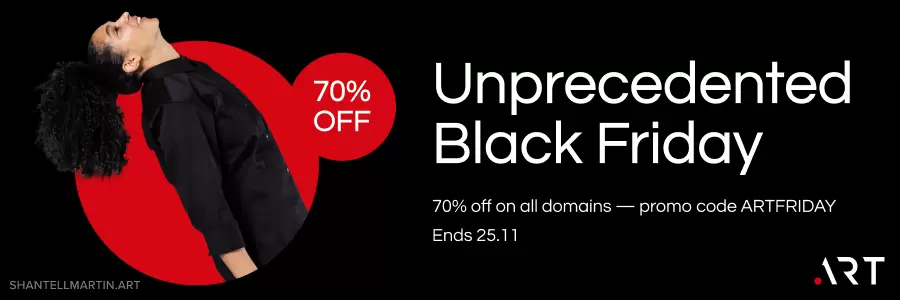Marketing Lessons from the Pros
Always wonder how they did it? Trying to step up your promotional game — this article is for you! Here is an overview of five famous artists who mastered the marketing game to inspire up-and-coming artists!


Establishing your brand and navigating the waters of marketing in the art world can feel like an overwhelming task. With countless artist profiles on social media platforms, advisors providing opinions, and online marketing boot camps, it can be difficult as an artist to work out the best course of action to market a practice and create an artist brand.
Traditionally, an artist’s career was larging at the mercy of critics’ reviews, for better or for worse. However, in the digital age, artist’s have an arsenal of tools to market their practice and particular brand. This week, we’re taking a look at five artists who conquered the marketing game by uncovering some common strategies that can help develop an artist’s marketing and branding strategy.
Salvador Dali (1904-1989)
From an immaculately waxed mustache to a pet lobster, Dali knew how to make a statement. Moreover, he leveraged the eccentricity of her personality and outward image to his career advantage. His larger-than-life personality led to success as a commercial artist, lending his talents to illustration and even television commercial spots. Though we know the surrealist master best for his cutting-edge video art and dizzyingly detailed fantastical paintings, Dali further promoted his work and artist brand in collaborative work with major brands.
Without deviating from the authentic eccentricity of Dali, the artist designed a sequence for Alfred Hitchock’s “Spellbound” (1945), and later landed a role in Alejandro Jodorowsky’s 1970s adaptation of “Dune”, alongside Mick Jagger and Orson Welles. This Hollywood connection later led to an introduction to Walt Disney. The two worked on the preliminary framework for a Fantasia-like animated short with Dali drafting numerous process sketches. Though the project never did come to fruition, Dali’s sketches hold testament to the artist’s devotion to his oeuvre and practice.
Further, Dali is credited in successful commercial work with Lanvin Chocolate, Datsun (now Nissan), Bryan’s Hosiery, Johnson Paint, various perfume and jewelry advertising companies, and the French train company, SNCF.
Artist’s making their mark in commercial art has been a longstanding tradition, particularly modern and contemporary artist’s in the Post-War age of mass media and consumerism. Whereas many may believe that the artist “sells-out” while lending their brush to commercial pursuits, these opportunities further the artist’s presence in the art community and allow for greater exploration in their practice with challenging campaigns and demands that push their artistic boundaries. These commercial pursuits can also lead to larger collaborations, boosting cache as an artist.

Andy Warhol (1928-1987)
Much like Dail, Warhol heavily influenced the commercial art scene in the 1950s and 60s. Producing whimsical Christmas cards for Tiffany & Co and shoe illustrations for I. Miller which were published on Sundays in the New York Times. Warhol, however, pushed beyond commercial art and embodied commercialism itself. Wholly devoting his person and practice to the commercialism of the Pop Art movement and Post-War consumerism, Warhol lived and breathed mega brands such as Campbells Soup, Brillo, Coca-Cola, and Paramount Pictures. This was a radical shift from the traditional expectations for an artist and their role as the societal outsider and anti-capitalist. Rather than steering away from this culture, Warhol leaned in and built his brand off of this culture.
This shift made waves in the artworld and propelled Warhol into the upper echelons of the artworld and high society. Deeply connected to networking, the artificiality of stardom, and product consumerism, Warhol’s practice broke ground in the art world. Becoming a coveted portrait artist of sorts for New York and Hollywood’s elite, Warhol developed his brand into a cult following and made him a household name. Importantly however, he maintained his deep relationships with fellow artists like Jean-Michel Basquiat and Keith Haring, collaborating regularly and featuring his friends and artist colleagues in “Interview” magazine, published in his Factory.

Andy Warhol and Jean-Michel Basquiat paint in Warhol’s Manhattan loft in 1984. © THE ANDY WARHOL FOUNDATION FOR THE VISUAL ARTS, INC.
Tracey Emin (b. 1963)
Emin was the “bad girl” of the Young British Artists (YBAs) of the late 1980s and early 1990s. Bucking the straight-laced decorum of British society and good manners, Emin expressed her authentic self through honest, emotional and raw works and interactions. Exhibiting with fellow YBAs, Damien Hirst, Sarah Lucas, and Jenny Saville, among others, Emin’s revolutionary and confrontational work differentiated her in the contemporary art world. Leveraging controversy and shock, Emin built her name on walking the razor-thin edge of the grotesque and vulgarity. This tension is a hallmark of her work, particularly her Turner Prize winning work, “My Bed” (1999).
It is important to note, however, that this edge is crucial for an artist. Emin forced viewers to reflect on societal values and mores through her own intimate experiences and perspectives. The shock was not necessarily for shock-sake, but rather the value and importance in the shock was the reality of the artist’s experience; the raw human experience of depression, loss, and love.
“My Bed” spurred thousands of column inches in critiques and was the buzz of the artworld in the commercial and institutional realms. Duchampian in some capacities, the work inflamed public opinion and made Emin an artist to watch.
Exhibiting at Jay Jopling’s White Cube in London was a major influence on the artist’s success. At the time, White Cube was a burgeoning gallery, featuring some of contemporary art’s most groundbreaking artists. This inherently rebellious edge to the gallery further bolstered Emin’s work and provided additional exposure and market for her work. Having a clear and distinctive voice set Emin apart in the artworld and is a great example to take note of.

Yayoi Kusama (b. 1929)
The Japanese artist is an intense workaholic and an embodiment of her work. From the early stages of her career in New York, Kusama enmeshed her person with her now signature polka dot patterning that proliferated her work.
In her first New York show in 1959, Donald Judd, who at the time worked as an art critic for ARTnews, wrote in his review that “Yayoi Kusama is an original painter. The five white, very large paintings in this show are strong, advanced in concept and realized.” He went on to say, “The expression [in the paintings] transcends the question of whether it is Oriental or American. Although it is something of both, certainly of such Americans as [Mark] Rothko, [Clyfford] Still and [Barnett] Newman, it is not at all a synthesis and is thoroughly independent.”
Her independent style set her apart from the “boys club” of her Ab-Ex contemporaries and helped define her career. Even during the early stages of her career, Kusama was deeply devoted to her polka-dot theme, developing and evolving her practice while presenting her own fashion and persona to match. This common vein throughout her career and personal life became her calling card, drawing attention wherever she exhibited. Particularly in the age of social media, the artist’s graphic and experiential style has been a magnet for the artworld community and influencers-alike, promoting the works across the globe.
Her work is very personal and emotionally loaded, but at the same time, accessible for gallery-goers and appeals to a variety of demographics. Whether you are drawn to the early net paintings, bright polka-dots, or galaxy-like infinity rooms, her practice transcends boundaries and is strengthened by her personal devotion in every-day life. Kusama has also had strategic partnerships with Louis Vuitton and has produced licensed key chains, mouse pads, paperweights, and polka dot pumpkin pillows in addition to accessibly priced editions.
Living and breathing her artistic style helped establish Kusama as a mega star in the artworld and acts as a great example for contemporary artists on self-promotion through the embodiment of their practice.

Yayoi Kusama, Infinity Room. © Yayoi Kusama/ Yayoi Kusama Studio, Inc, Courtesy Castellane Gallery, New York
Takashi Murakami (b. 1962)
Similar to Kusama, Murakami has built a brand out of his artworks. A creative entrepreneur, artist, designer, and curator, the multi-faceted approach to the self-marketing of the artist’s work has helped Murakami break through the barriers of contemporary art. Particularly as a Japanese artist, Murakami faced additional barriers to be accepted and succeed in the Western art world. In his book “Geijutsu Kigyo Ron” (2005), he postures, “In order to stand up to Western artists, I analyzed the mechanism of Western art. I also polished my skills in creative management, making hypotheses and testing them.”
Taking inspiration from anime, manga, and hentai, his incredibly detailed works, both large and small-scale, are bright poppy works that appeal to masses of collectors. Taking his practice a step further, Murakami developed an in house marketing company, Hiropon Factory in Tokyo. The production workshop, which in 2001 became Kaikai Kiki Co. Ltd, has more than a hundred workers dedicated to the production, management, and marketing of the art made by Murakami. The artist blurred the line between fine and commercial art and has a robust collaboration portfolio including begabrands such as Louis Vuitton and Issey Miyake in addition to musicians like Pharell Williams and Billie Eilish.
Toys, accessibly-priced editions, pillows, and clothing have all come out of his practice in deliberate steps to market his works and expand his brand.

Photo by RK (IG: @rkrkrk) @Takashi Murakami/Kaikai Kiki Co., Ltd. All Rights Reserved.
Key Take-Aways
Having explored these artists careers, what are some of the lessons we can learn and apply? Importantly, honing a point of view as an artist, embodying your mission as an artist, being open to collaborations with other artists and opportunities, and using social media platforms at your disposal are all major points that should not be overlooked.
The task may feel daunting and unnatural to shift into marketing an artistic practice. Despite that, it is a critical component in an artist’s career and one that develops the more trial and error occurs. Some marketing strategies may be misfires or don’t meet expectations; however, the more an artist refines their vision, practice, and voice while being open to collaborations, greater exposure occurs. Maintaining relationships with gallerists, collectors, and contemporaries helps build a support system that encourages reach into new pockets of interested art world parties.
Working with friends and colleagues and discussing strategies that have worked can help expand your knowledge and practice. Experimenting with new kinds of posts, website design, and collaborations can help broaden horizons and inspire new ideas. Don’t be afraid to take calculated risks, use your voice, and think outside the box!
Looking for more? Check out these additional resources
“How To Become A Successful Artist” by Magnus Resch
“How to Be an Artist” by Jerry Saltz






